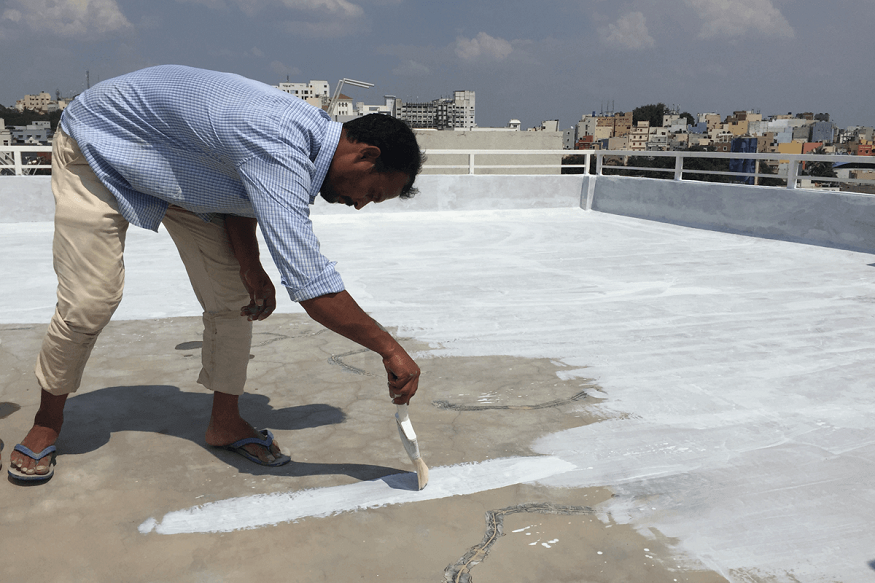
Top Waterproofing Solutions to Combat Monsoon Challenges
Monsoons can be tough on homes. Heavy rains not only bring water into your life but also into places you don’t want it, like your walls, roofs, and basements. Without the right precautions, you could be dealing with damp patches, mold, or worse, costly structural damage. But, with effective waterproofing solutions, you can protect your home and keep it dry no matter how heavy the rain gets.
Here’s a clear guide to some of the top waterproofing solutions to help you tackle monsoon challenges. Whether you’re a homeowner looking for practical tips or searching for reliable waterproofing contractors, this post has you covered.
Why Waterproofing Matters During Monsoons
Rainwater can seep into walls, roofs, and floors if your home lacks proper waterproofing. Over time, this leads to damp patches, mold growth, and even structural damage. You might notice peeling paint, musty odors, or weakened ceilings. Ignoring these problems can result in costly repairs.
Waterproofing isn’t just about fixing leaks; it’s about prevention. With the right waterproofing solution, you can shield your home against moisture, saving money and avoiding stress in the long run.
Top Waterproofing Solutions for Your Home
1. Roof Waterproofing
The roof is your home’s first line of defense against rain. Even minor cracks or gaps can allow water to penetrate, causing leaks. Roof waterproofing can address this issue.
- Solution: Use liquid waterproofing membranes or roof coatings. These materials form a protective layer, sealing cracks and preventing water infiltration.
- Tip for You: If your roof is older, consider consulting waterproofing contractors for a detailed inspection before the monsoon.
2. Wall Waterproofing
Rain can leave your walls with unsightly damp patches, especially on exteriors. Over time, water can erode the paint and weaken the structure.
- Solution: Exterior walls can be treated with a waterproofing solution like acrylic-based coatings or water-repellent paints. For interiors, use wall sealants to stop moisture coming through.
- Tip for You: Focus on areas where pipelines or wires enter the walls, as these spots are often vulnerable to leaks.
3. Basement Waterproofing
Basements can become a breeding ground for moisture-related problems during heavy rains. Water can seep through floors or walls, leading to flooding or dampness.
- Solution: Try waterproofing membranes for the floor and walls. If you’re dealing with severe waterlogging, sump pumps or drainage systems can help keep the area dry.
- Tip for You: Ensure proper slope and drainage away from the foundation to reduce water accumulation near the basement.
4. Bathroom and Kitchen Waterproofing
Bathrooms and kitchens are often exposed to water daily, making them high-risk areas for seepage. During the monsoon, these problems can worsen.
- Solution: Apply waterproofing solutions like cementitious coatings on the floor and lower walls to keep moisture at bay. Additionally, seal all joints near taps, sinks, and drains.
- Tip for You: Test for leaks periodically to fix minor issues before they escalate.
5. Balcony and Terrace Waterproofing
Balconies and terraces endure direct exposure to rain, leading to pooling and seepage into rooms below.
- Solution: Use polymer-based waterproof coatings for these areas. Also, check for proper drainage systems to allow water to flow out quickly.
- Tip for You: Avoid heavy planters or furniture on terraces that could cause cracks over time.
Hiring Reliable Waterproofing Contractors
While some waterproofing tasks can be DIY-friendly, bigger issues often require professional expertise. Waterproofing contractors have the tools, materials, and knowledge to handle complex problems effectively.
When selecting a contractor:
- Look for someone with experience in waterproofing solutions tailored for monsoon conditions.
- Read reviews or ask for references to verify their work quality.
- Ensure they offer warranties on their services, giving you peace of mind.
A good waterproofing contractor doesn’t just fix current issues. They’ll also identify potential problem areas to prevent future damage.
Maintenance Tips to Complement Waterproofing
Even the best waterproofing solutions need proper maintenance to work well. Here are some simple tips you can follow:
- Check drainage: Clear gutters and drains regularly to prevent blockages.
- Inspect for cracks: Keep an eye out for any new cracks in walls, roofs, or floors and address them quickly.
- Use dehumidifiers: These can help reduce moisture levels indoors, especially in monsoon-prone regions.
- Elevate storage: Store valuable items off the ground in basements or lower levels to protect them from unexpected leaks.
The Benefits of Proactive Waterproofing
By investing in proactive waterproofing solutions, you’re creating a safer and healthier environment for your family. Not only do you avoid the headache of repairs, but you also improve your home’s overall lifespan. Waterproofing can even enhance property value by addressing a key concern for potential buyers.
Final Thought
Monsoon challenges don’t have to be overwhelming. With the right waterproofing solutions and contractors, you can protect your home effectively. Pay attention to key areas like roofs, walls, basements, and terraces, and don’t forget regular maintenance. Your home deserves to stay strong, dry, and comfortable no matter how heavy the rains.
Start by inspecting your home today and take action before the monsoon arrives. When it comes to waterproofing, being prepared makes all the difference!
